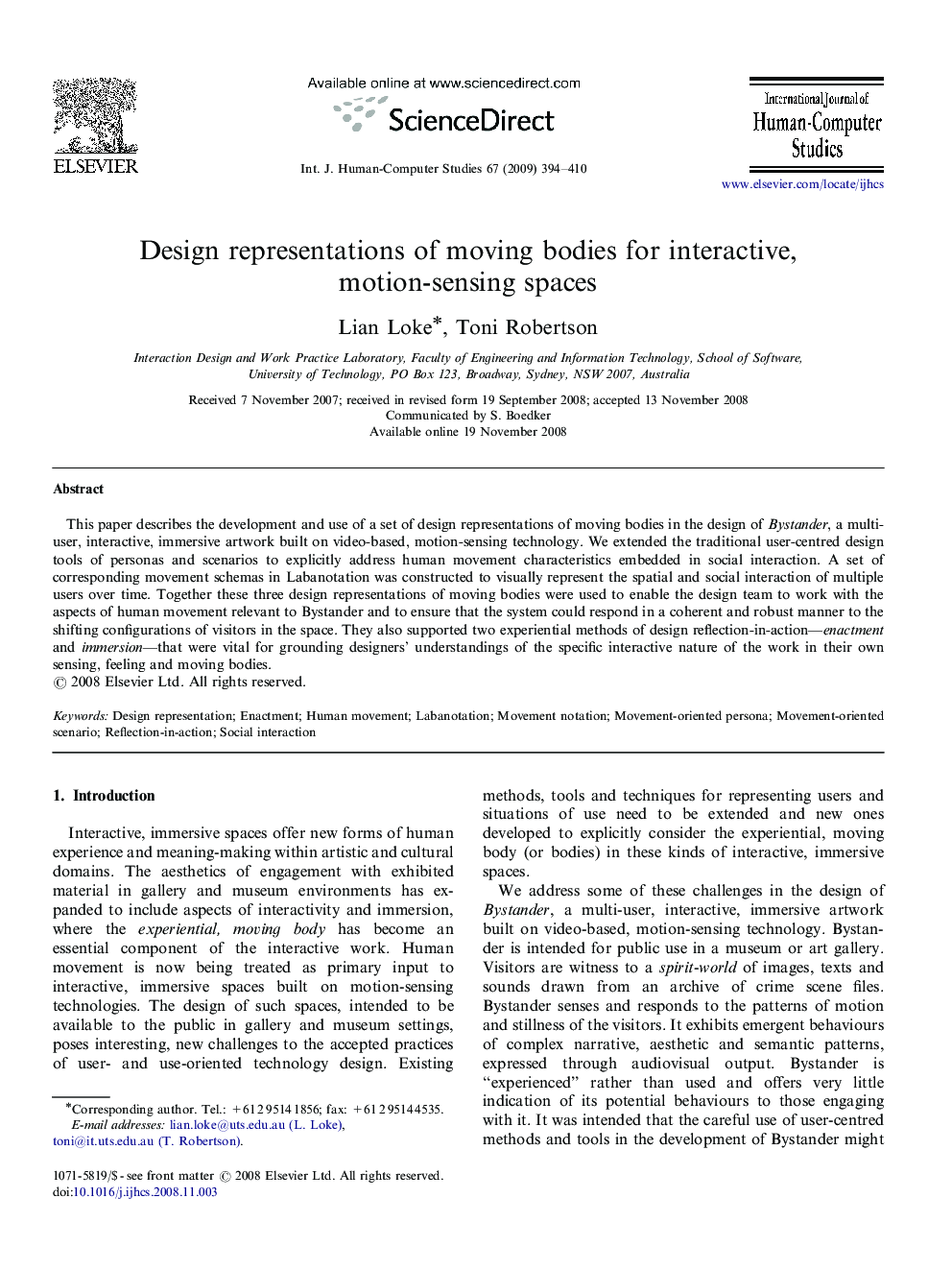| Article ID | Journal | Published Year | Pages | File Type |
|---|---|---|---|---|
| 402064 | International Journal of Human-Computer Studies | 2009 | 17 Pages |
This paper describes the development and use of a set of design representations of moving bodies in the design of Bystander, a multi-user, interactive, immersive artwork built on video-based, motion-sensing technology. We extended the traditional user-centred design tools of personas and scenarios to explicitly address human movement characteristics embedded in social interaction. A set of corresponding movement schemas in Labanotation was constructed to visually represent the spatial and social interaction of multiple users over time. Together these three design representations of moving bodies were used to enable the design team to work with the aspects of human movement relevant to Bystander and to ensure that the system could respond in a coherent and robust manner to the shifting configurations of visitors in the space. They also supported two experiential methods of design reflection-in-action—enactment and immersion—that were vital for grounding designers’ understandings of the specific interactive nature of the work in their own sensing, feeling and moving bodies.
